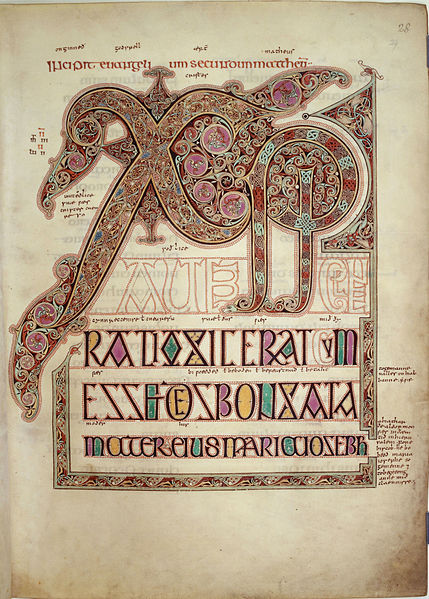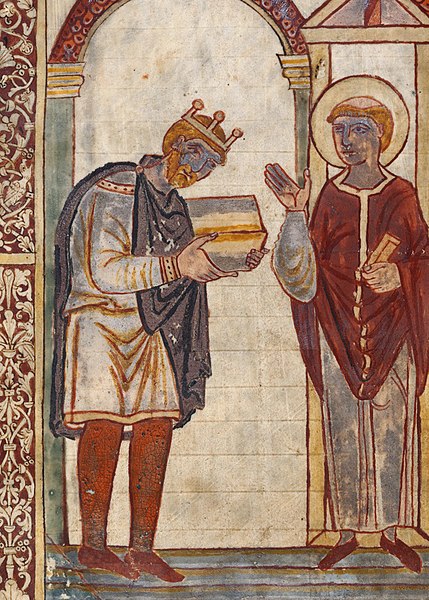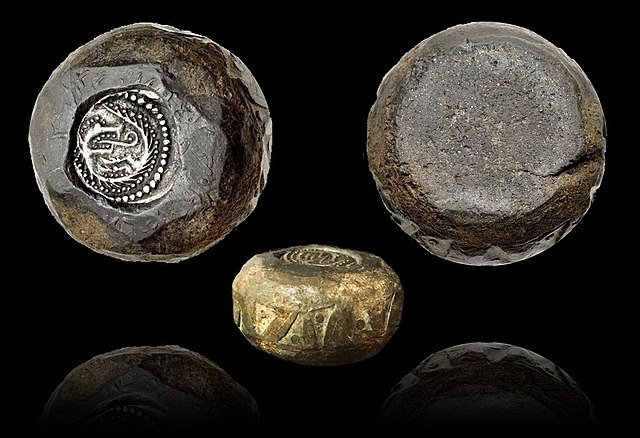Cuthbert of Lindisfarne was an Anglo-Saxon saint of the early Northumbrian church in the Celtic tradition. He was a monk, bishop and hermit, associated with the monasteries of Melrose and Lindisfarne in the Kingdom of Northumbria, today in north-eastern England and south-eastern Scotland. Both during his life and after his death, he became a popular medieval saint of Northern England, with a cult centred on his tomb at Durham Cathedral. Cuthbert is regarded as the patron saint of Northumbria. His feast days are 20 March and 4 September.
Cuthbert discovers a piece of timber, from a 12th-century manuscript of Bede's Life of St Cuthbert
12th century wall-painting of St Cuthbert in Durham Cathedral
Cuthbert meets Ælfflæd of Whitby on Coquet Island, Bede's Life of Cuthbert, 12th century
The front cover of the St Cuthbert Gospel of St John, recovered from his coffin; the original tooled red goatskin binding is the earliest surviving Western binding.
The Anglo-Saxons were a cultural group that inhabited much of what is now England in the Early Middle Ages, and spoke Old English. They traced their origins to Germanic settlers who came to Britain from mainland Europe in the 5th century. Although the details are not clear, their cultural identity developed out of the interaction of these settlers with the pre-existing Romano-British culture. Over time, most of the people of what is now southern, central, northern and eastern England came to identify as Anglo-Saxon and speak Old English. Danish and Norman invasions later changed the situation significantly, but their language and political structures are the direct predecessors of the medieval Kingdom of England, and the Middle English language. Although the modern English language owes somewhat less than 26% of its words to Old English, this includes the vast majority of words used in everyday speech.

Page with Chi Rho monogram from the Gospel of Matthew in the Lindisfarne Gospels c. 700, possibly created by Eadfrith of Lindisfarne in memory of Cuthbert
King Æthelstan presenting a gospel book to (the long-dead) St Cuthbert (934); Corpus Christi College, Cambridge MS 183, fol. 1v
The Oseberg ship prow, Viking Ship Museum, Oslo, Norway.
Anglo-Saxon-Viking coin weight. Material is lead and weighs approx 36 g. Embedded with a sceat dating to 720–750 AD and minted in Kent. It is edged with a dotted triangle pattern. Origin is the northern Danelaw region, and it dates from the late 8th to 9th century.








